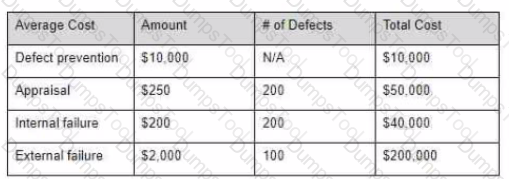Your team has been assigned to lest a new product thatis tightly integrated with existing systems The integrations include data transfers and transformations You have access to the architectural design documents and the integration specifications and some of your testers are former developers.
Given this information, what is the most appropriate test approach?
Your team has decided that they will build their own test management tool This will allow them to link the requirements and testcases together providing full traceability It will also allow them to create fully customized reporting and color-coded dashboards They have estimated the time required to create the new tool and the cost These fit within the project schedule and budget
What other consideration should be taken before this decision is made?
There is a debate in your organization about who can close a defect report The developers think theyshould be able to reject and close defects without any further steps The testers are not happy with this approach as they are afraid the rejections may go undetected and the developers may close something without understanding the real problem
How can this problem be rectified7
You have been looking at the actual vs expected defects in one high risk area of the software The actual is much higher than the expected value What should you do?
Which of the following defect statistics will provide input to be used for improvement in the defect reporting process?
You are working on a project that is having problems with regressions. Witheach release of software given to the test team. 50% of the defects found are actually regressions.To combat this you have decided to implement test automation.You have given your automation team the following goal
'Implement lest automation to automate 90% of the manual regression tests before the productrelease date.’’
Which of the following is likely an issue with this goal being defined as "SMART?
You have been assigned to a project that has a very tight schedule.In fact, given your first analysis you do not think the planned test execution can be completed within the schedule There is no time allowed for defectfixing or for repeating tests.Regression testing has been left out of the planning entirely There is no time to develop test automation.The team has agreed that this Is not the way to run a project, yet they are stuck with the current schedule
Given this information what is the best way to proceed with the testing to try to meet the deadline with the best outcome1?
You have assembled the following cost of quality numbers 200 defects were found prior to release and 100 were found after.
Given this information what is the total cost of quality for this project?

Your team has been given the following test objective Ensure that the users are happier with this version thanthey were with the last version?
What is wrong with the way this is defined?